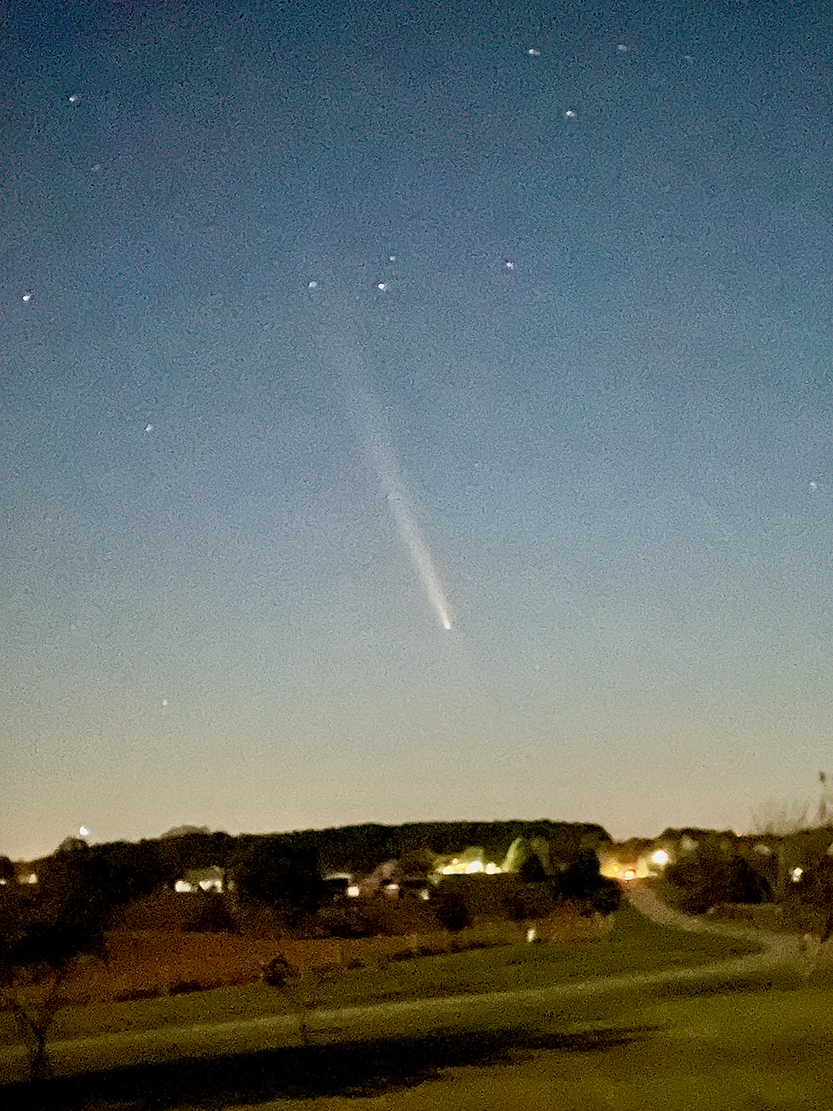The last few weeks have been an amazing time to keep our eyes turned towards the skies. Early October brought spectacular views of the Aurora Borealis to sky watchers throughout Illinois. It has been a very active year with coronal mass ejections directed towards earth peaking in May and again in October. The night skies were aglow with ionized reds and greens shimmering in clear skies.
October also brought a celestial visitor to our part of the solar system. The comet Tsuchinshan-ATLAS has taken an 80,000-year journey from the ort cloud surrounding our solar system to swing around the sun. Astronomers call it a “once in a lifetime” viewing of this comet. In actuality, it is a once in a species existence opportunity. Think about it … 80,000 years ago modern humans (Homo sapiens) were in the process of migrating out of Africa into what today is the Middle East. Our species shared the planet with other species of humans. Neandertals and Denisovans are a couple of other human species that we have identified. All human species existed as small nomadic groups of hunters and gatherers. While the comet hurdled through space on its journey, we lost our Neanderthal and Denisovan cousins. Their extinction is still a great mystery and one that should serve as a warning of our own fragility. Yet our species survived, thrived, and spread across the planet.
I was in the Shawnee National Forest on Oct. 14 where the skies were dark enough to see the comet with the naked eye just after sunset and before the full moon rise brightened the night skies. The comet and its long “tail” were striking on the horizon. You might think the “tail” trails behind the comet like the contrail of a jet airplane, but it is actually debris that is being “blown away” from the comet by solar winds in the vacuum of space as it nears and swings around the sun. So, the tail’s position is not related to the comet’s path of trajectory. The same solar winds that carry sun particles towards earth to create mesmerizing aurora displays also direct the direction of the comet’s tail.
While I view the comet, my mind keeps going back to the geologic timeline as measured by the comet’s 80,000-year-old journey. Most of Illinois was covered in glaciers during this period, but the Shawnee National Forest was not. The hills and hollows, rock outcrops and rugged landscape are ancient. They were untouched by glaciers, but influenced by vast volumes of meltwaters as glaciers retreated. Water flowing over eons exposed the ancient bones of the earth, giving us such unique geology as Garden of the Gods Natural Area, Giant City State Park, and LaRue Pine Hills ecological area. A visit to Millstone Bluffs Archeological Area in Pope County can help put a human face on this ancient landscape. Petroglyphs adorn the rock and were created by humans of the Mississippian culture that lived here more than 1,000 years ago.
The 80,000 years of the comet’s journey through the cosmos is parallelled by the journey of modern humans from their ancestral origins in Africa. That journey is no less perilous and involves thousands of generations of human beings learning and adapting to persist in an ever-changing world. We are each a product of that long and perilous journey. How we move forward will determine if our species will be around to look to the skies in the future and gaze in wonder upon the comet’s return.



1 comment for “Nature Rambles: Looking up to the sky with an eye on the long term”
Recent Comments